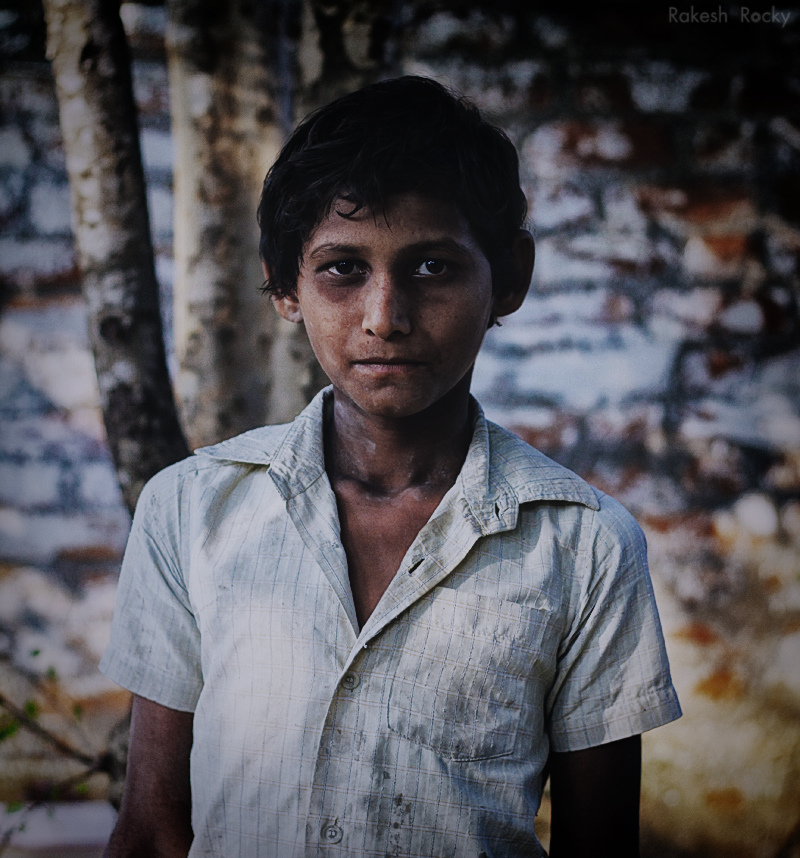Child Labor: A Pervasive Tragedy

Work- n. service done in exchange for money. Work isn’t a pleasant activity; it’s tedious and difficult, however, it’s done in order to survive. When you think of an average worker, you think of an adult, not a child. In India, that is unfortunately not the case. There, many children are tiresome laborers in a wide variety of industries. Having to work through one’s childhood continuously into adulthood is something people in the U.S. simply cannot relate to, but it’s a reality throughout India.
Issue
The only things that children are supposed to do are learn, play, and grow, right? Wrong. Statistically speaking, over 17 million of laborers are children according to the Indian government, yet the number is realistically believed to be over 100 million. These children, younger than fourteen years old, wake up at five in the morning to work all day, get back to their destitute homes late at night, and rise the next morning to do it all over again. In India, a child is kidnapped every eight minutes, where the child is then forced into work. One such case is of a young 13 year old girl named Lakshmi. Lakshmi was taken away from her family for four years and was forced to work, while facing sexual abuse.The young girl faced beatings and verbal abuse from her employers who had relocated her across Western Delhi from her home in North India. Luckily, the girl was found by her uncle where she was working as a tea gardener, but otherwise, the girl might have been stuck working for the rest of her life. Such a life is not meant for a child.
The children laborers of India are being abused by their employers, not only physically, but also sexually. 50% of the children workers have been physically abused and 53.22 % have been sexually abused. In fact, “Every second child reported facing emotional abuse.” To further show the seriousness of the situation, all these children who participated in the report are young workers of today.
There are laws meant to penalize employers that enslave young children, but they are barely enforced, allowing industries to take advantage of young and cheap labor. The carpet, gemstone polishing, silk, and fireworks industries are willing to take advantage of children’s financial states and have them work instead of hiring their parents. Such industries pay children significantly low wages. In Bihar, 27 boys were found working in a shack with only .11 cents an hour. Not only this, but these workers have health issues, such as infections, eye diseases, spinal issues, muscle pains, headaches as well as psychological damage. With over 30% of child laborers located in India, something must be done. Laws that are in effect today (which are not effective) include one that fines the employing of a minor, anyone below 14 years of age, 50,000 Rupees. However, offenders are not intimidated whatsoever and the law has had minimal to no impact. In February 2013, however, some change did take place. The Indian government had reviewed and made revisions to a preexisting amendment, that made it a high offense to employ children between the ages of fourteen and eighteen in “hazardous work.” Such actions are vital to ending child labor, but to truly eliminate it we need to eradicate child labor’s roots, lack of a solid educational system.
Moving Forward
In order to create change, education for these children is necessary. Making sure children attend classes and are having fun is something to keep them from going back to work. Children are the adults of tomorrow, they need to have experiences in order to grow properly. Depriving the youth of today of these learning opportunities is both sad and unfair. Children are children, they have no place in the workplace, and in order to stop this, we need to advocate for the educational and labor reforms. Children need to be able to grow up in a safe environment and focus on work later on in life.
[Image Attribute: Flickr]




